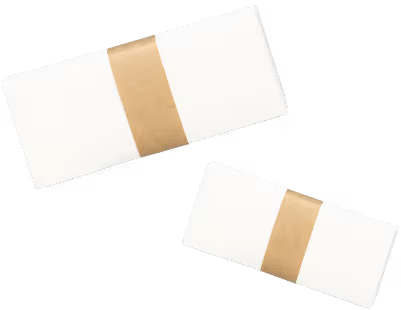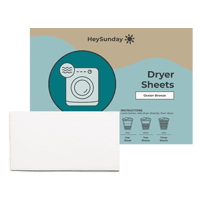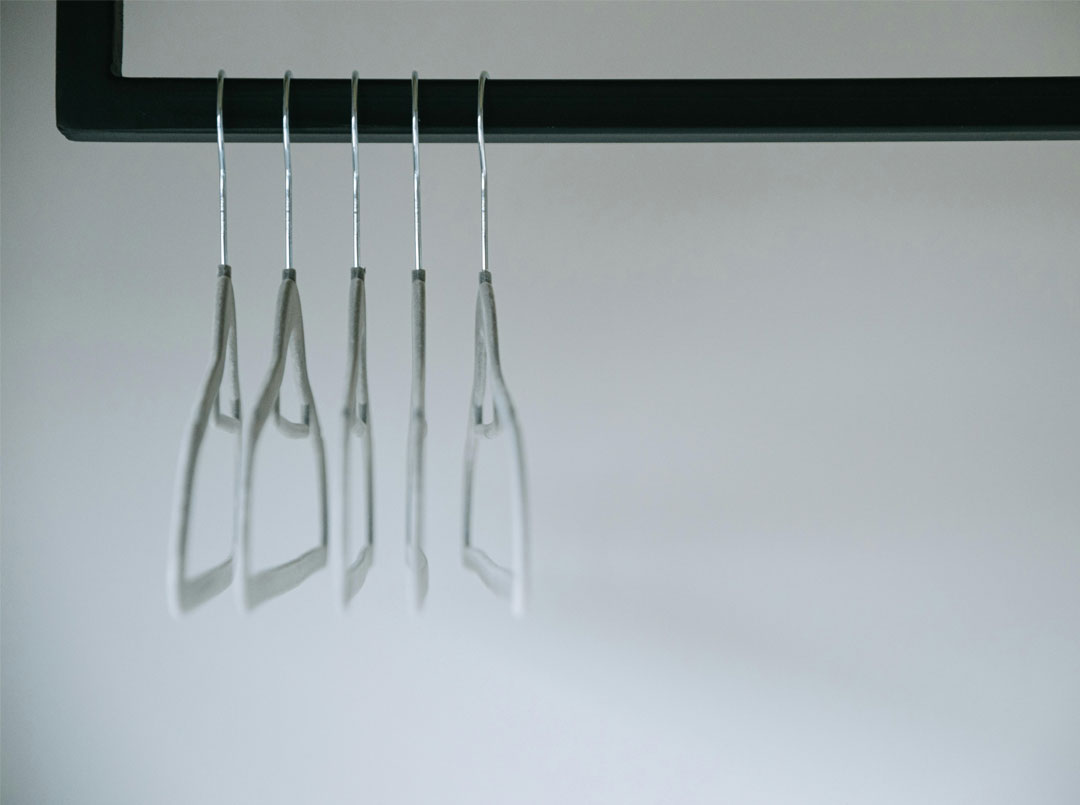
How to Save Energy and Water at Home: Smart Tips for Dishes, Laundry & More
Reducing energy and water use at home isn’t just good for the environment, it’s also one of the smartest ways to cut down your monthly utility bills. From washing dishes to doing laundry, every small habit adds up.
In this guide, you’ll find 27 practical, affordable tips to help you conserve resources in your daily chores.
Whether you're a homeowner, renter, or first-time eco-friendly shopper, these strategies will show you how to save energy, reduce water waste, and support a more sustainable future, all while making your home more efficient.
Why Energy and Water Savings Go Hand-in-Hand
Water and energy are more connected than you might think. Every time you use hot water, whether it’s for showers, laundry, or dishes, your home uses energy to heat it. That means cutting back on hot water helps lower both your water and energy bills.
Small changes like adjusting your water heater or installing low-flow fixtures can make a big impact on both fronts. By improving how you use heated water, you reduce your overall utility use in one of the easiest, most cost-effective ways possible.
Water Heating = One of the Biggest Energy Sinks in the Home
Water heating accounts for roughly 18% of your home’s total energy use, according to the U.S. Department of Energy. That’s second only to heating and cooling. Every time you run hot water, you're paying for both the water itself and the energy to heat it.
Older heaters and frequent hot water use (like long showers or hot laundry cycles) drive those costs up even more. But small changes, like switching to cold washes or installing a low-flow showerhead, can cut your hot water use by thousands of gallons a year, saving both water and energy. It's a simple way to lower two bills at once.
Ready to make those changes? Let’s start with the quickest wins.
Fastest Wins: 15-Minute Energy-Saving Fixes

Want to start saving energy without overhauling your entire home? These quick fixes take 15 minutes or less and make a measurable impact on both your power usage and your utility bills. They’re perfect for renters, busy homeowners, or anyone looking for low-lift ways to live more sustainably.
From lighting swaps to smarter power use, these smart energy tips prove that going green doesn’t have to mean going all-in right away.
Switch to LED Bulbs & Smart Strips
Lighting makes up about 10% of the average U.S. household’s electricity bill, and switching to LED bulbs is one of the fastest ways to cut that number down. LEDs use at least 75% less energy than incandescent bulbs and last 25 times longer, according to the U.S. Department of Energy. That means fewer replacements, less waste, and real savings over time.
For every incandescent bulb you replace, you can save around $50–$75 in energy costs over the bulb’s lifetime.
Want to take it a step further? Plug your devices into smart power strips. These strips detect when electronics (like TVs, computers, or coffee machines) are in standby mode and cut power to them automatically.
Phantom or "vampire" energy, the power used by electronics when they’re plugged in but not in use, can account for 5–10% of household electricity usage. With smart strips, you eliminate that waste without lifting a finger.
Quick Tip: Start with high-use areas like your kitchen, home office, and living room. Replace all overhead lights and plug clusters of devices into a single smart strip to simplify your setup.
Lower Water Heater Temp to 120°F
Most water heaters are set to 140°F by default, but lowering the temperature to 120°F is a simple adjustment that can slash your energy bill without sacrificing comfort. Not only is 120°F plenty warm for showers, dishwashing, and laundry, but it's also the recommended setting by the DOE to prevent scalding and reduce energy usage at home.
According to the EPA, lowering your water heater temperature to 120°F can save up to 10% on water heating costs. For the average home, that translates to around $30–$60 per year, depending on your household size and hot water usage.
Adjusting your water heater is typically a quick DIY job. If you have a gas heater, you can usually turn the dial down manually. For electric models, you may need to remove a panel and adjust the thermostat settings with a screwdriver (always turn off power at the breaker first).
Bonus Benefit: Lower temperatures also slow down mineral buildup and corrosion in your heater, which can extend the life of your appliance and reduce maintenance costs.
Laundry Tips That Save Energy and Water

Laundry might feel like a routine chore, but it’s one of the biggest opportunities for energy and water savings in your home. Between the electricity needed to heat water, the power your dryer consumes, and gallons of water used per load, making a few simple tweaks can have a major impact.
Whether you're tackling mountains of towels or small weekly loads, these energy-efficient laundry tips will help you wash smarter, not harder.
Always Wash with Cold Water
Here’s a surprising fact: about 90% of the energy used by a washing machine goes toward heating the water. That means one of the easiest ways to save energy at home is by switching your machine to the cold wash setting.
Most modern detergents, especially those labeled for cold water, are specially formulated to clean just as effectively without heat. Cold water is also gentler on fabrics, helping your clothes last longer and reducing microplastic shedding.
Savings Snapshot: According to Energy Star, switching from hot to cold water can cut your washing machine’s energy use by up to 50%, which could mean $50–$150 in annual savings, depending on your laundry habits.
Upgrade to Energy Star Washer/Dryer
Wondering how to reduce utility bills? Energy Star-certified washers and dryers will help you conserve energy and water while reducing expenses with every load. These water-saving appliances use 25% less energy and 33% less water than standard models.
Front-loading washers tend to be more efficient than top-loading ones and can fit larger loads, saving time and energy. Many Energy Star dryers now come with moisture sensors that automatically shut off the cycle once clothes are dry. That means you can save money on electricity.
Pro Tip: Check out rebate programs through your local utility or state energy office. Some Energy Star energy-efficient home appliances qualify for hundreds of dollars in rebates or tax incentives, especially under the Inflation Reduction Act.
Use Extra Spin Cycle & Line Drying
Dryers are one of the most energy-hungry appliances in the home. But there are two simple ways to cut back on drying costs without skipping the fluff:
- Run an extra spin cycle on your washer to remove more water from clothes before drying. The spin cycle uses far less energy than your dryer, so it’s an easy way to shorten drying time.
- Air dry when possible, either with a foldable rack indoors or a clothesline outdoors. Even drying just one load per week this way can make a noticeable difference in your electric bill.
- On sunny days, drying clothes outside also adds a fresh scent and natural antibacterial benefit—no dryer sheet needed.
Try Eco-Friendly Detergents and Dryer Sheets
Your choice of laundry products matters just as much as your appliances. Traditional detergents often contain harsh chemicals and synthetic fragrances, which can pollute waterways and irritate sensitive skin.
That’s why we recommend switching to eco-friendly laundry detergent sheets and dryer sheets. These compact, plastic-free alternatives are just as effective as traditional products but without the waste. They’re biodegradable, plant-based, and designed to work in all water temperatures and machine types.
- HeySunday Laundry Sheets: Pre-measured and mess-free, these sheets dissolve easily and clean powerfully—no bulky jugs or plastic waste required.
- HeySunday Dryer Sheets: Made with naturally derived ingredients to soften clothes and reduce static without leaving chemical residue.
Bonus: Their compostable packaging and low-weight design also mean fewer emissions during shipping, helping shrink your laundry’s carbon footprint even more.
Dishwashing: Better for the Planet & Your Wallet

Dishwashing is one of those everyday chores where small habits can lead to big savings. When done thoughtfully, it’s a great opportunity for environmental benefits and saving money.
Dishwasher vs. Handwashing (Which Saves More?)
When it comes to the dishwasher vs. hand washing for energy use, contrary to popular belief, modern dishwashers are more efficient than hand washing.
According to the U.S. Department of Energy:
- An Energy Star-rated dishwasher uses about 3 gallons per load
- Handwashing the same load can use up to 27 gallons, especially with the water running
Factor in the energy used to heat that water, and dishwashers come out ahead, especially if you use eco modes and skip the heat-dry cycle. In fact, dishwashers can use 60% less water and 70% less energy than hand washing.
Sustainable Swap: Use HeySunday’s dishwasher sheets for a plastic-free, plant-powered clean. No dyes, harsh chemicals, or wasteful packaging—just one sheet per load, mess-free and cabinet-friendly.
Scrape, Don’t Rinse: Pre-wash Mistakes to Avoid
One of the biggest dishwashing mistakes? Pre-rinsing dishes. It wastes water and confuses your dishwasher’s soil sensors, leading to weaker cycles.
- Leaving the tap on while rinsing can waste up to 6 gallons per minute
- Pre-cleaned dishes may trigger shorter, less effective wash cycles
Instead, try this:
- Scrape food scraps into the compost or trash
- Load dishes properly without blocking spray arms
- Skip the rinse entirely
When paired with HeySunday dishwasher sheets, you can save energy doing dishes. Your dishes will come out sparkling, without wasting water or using plastic-packed detergent pods. It’s a win for your wallet and a win for the planet.
Bathroom & Shower Energy Savers
The bathroom is one of the most water-intensive areas in your home, and much of that water is heated, making it an energy hotspot too. Thankfully, even small adjustments in your daily routine or affordable product upgrades can yield meaningful savings on both fronts.
These bathroom energy savers are easy to implement and don’t require a full remodel to make a difference.
Install Low-Flow Fixtures
One of the simplest, most cost-effective changes you can make is to install low-flow showerheads and faucet aerators.
These fixtures reduce the volume of water flowing through your taps without compromising pressure, allowing you to enjoy the same clean, invigorating shower experience with less water waste.
Here’s what to know:
- Standard shower heads use about 2.5 gallons per minute (gpm). Low-flow versions can cut that down to 2.0 gpm or less.
- Faucet aerators can reduce flow rates from 2.2 gpm to as low as 0.5 gpm, depending on placement.
- The EPA estimates that the average family can save 2,700 gallons of water per year just by installing WaterSense-labeled showerheads.
These products are widely available at hardware stores or online, and many cost under $25. Most are DIY-friendly and can be installed in under 10 minutes with basic tools, making them a smart first upgrade for renters and homeowners alike.
Pro Tip: Check with your local utility provider. Many offer free water-saving kits or rebates for installing approved fixtures. Some even mail them directly to your door.
Time Your Showers (and Save on Heating)
Hot showers feel great, but they come at a cost. Water heating accounts for about 18% of your home’s energy use, and long showers are one of the biggest culprits. Cutting just a few minutes off your routine can make a big difference.
Here’s how to get started:
- Use a shower timer (there are mechanical or digital options for under $10) to stick to a 5–7 minute limit.
- Listen to a short playlist or podcast segment to stay on track without watching the clock.
- Consider a “navy shower”: get wet, turn off the water while lathering, then rinse. It may feel a bit Spartan, but it can cut water use by up to 70% per shower.
Savings Snapshot:
- Reducing a 10-minute daily shower to 5 minutes saves 12.5 gallons per day, or over 4,500 gallons per year per person.
- That also reduces demand on your water heater, cutting energy bills and extending appliance lifespan.
And yes, shorter showers are still enjoyable—especially when paired with soothing lighting, natural body products, and maybe even a plant or two to green your bathroom space.
Smart Tech & Behavioral Changes
For long-term savings, pairing smart tech with small habit shifts is a winning combo. A few simple upgrades can make your home more efficient year-round.
Programmable Thermostats
Smart thermostats like the Google Nest or ecobee let you automate heating and cooling schedules. Set it lower when you’re out or asleep to save energy without thinking about it.
Insulate Pipes and Tank
Wrapping your hot water pipes and tank with affordable insulation kits from a hardware store helps retain heat, so your system doesn’t work as hard.
Monitor Usage with Home Energy Monitors
Devices like Sense or Emporia show exactly where your energy is going. With real-time data, it’s easier to catch wasteful habits and make lasting changes.
Rebates & Tax Incentives (2025 Update)
Thanks to the Inflation Reduction Act, you may be eligible for thousands of dollars in rebates:
- $840 rebate for Energy Star electric heat pump water heaters
- $1,750 rebate for heat pump clothes dryers
- 30% tax credit (up to $1,200) for home energy audits and efficiency improvements
Want to know how to save energy and cash? Find your state’s programs at DSIRE.org.
FAQs
Is it cheaper to wash dishes by hand?
No. Modern dishwashers are far more water- and energy-efficient. Just avoid pre-rinsing and only run full loads.
What uses more energy: washer or dryer?
Dryers typically use more energy than washers, especially electric models. Line drying can reduce overall laundry energy use by up to 50%.
Does cold water really clean clothes?
Yes! Today’s detergents are formulated for cold water and do an excellent job cleaning everything from delicates to everyday wear.
Do eco-friendly products actually save money?
Absolutely. While some may cost more upfront, they typically last longer, use fewer resources, and cut utility bills long-term.
Key Takeaways
Ready to take action? Here is a home energy-saving checklist you can implement today:
- Switch to LED bulbs and smart strips
- Cut water heating costs by lowering your setting to 120°F
- Always wash laundry in cold water
- Upgrade to Energy Star rated appliances
- Air dry or use extra spin cycles
- Use HeySunday’s plastic-free laundry & dishwasher sheets
- Install low-flow showerheads and faucets
- Shorten showers with a timer
- Insulate hot water pipes
- Use a programmable thermostat
- Track usage with energy-monitoring apps
Print this list and hang it near your laundry area or kitchen — it’s your new go-to for reducing waste, cutting costs, and living more sustainably.














“My sheets have never felt cleaner. I’m hooked.”
“Finally — detergent that actually works and doesn’t take up half the shelf.”
“Hey Sunday WORKS. Great for stains, and no buildup in the washer.”
“We switched from liquid. The scent is amazing and it saves us money.”
“I’ve got total control with HeySunday. I’ll never go back to powder.”